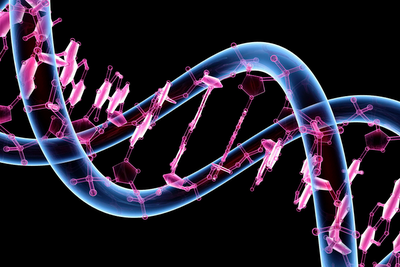Genetics and muscle growth is a touchy subject for many because it is something you cannot alter or change. You have to play with the cards your dealt with.
A landmark study by Hubal used 585 male and female human subjects and showed that twelve weeks of progressive dynamic exercise resulted in a shockingly wide range of responses.
The worst responders lost 2% of their muscle cross-sectional area and didn’t gain any strength whatsoever. The best responders increased muscle cross-sectional area by 59% and increased their 1RM strength by 250%. Keep in mind these individuals were subjected to the exact same training protocol.
Genetics affect muscle growth in the following ways:
Hormone Output
The amount of testosterone and growth hormone your body produces significantly affects the amount of muscle you may gain. Testosterone, your body’s most anabolic hormone plays a role in muscle size, strength and recovery. More testosterone = More muscle. Growth Hormone is also involved in muscle growth, but more along the lines of recovery.
Some people genetically produce more testosterone and growth hormone than others and therefore will likely gain muscle faster. Read our “5 Guaranteed Ways To Boost Testosterone” and learn how to boost your testosterone levels to the max.
Somatotype (Bodytype)
Mesomorphs tend to experience greater muscular hypertrophy and fat loss. Mesomorphs have moderate metabolisms, and usually have a naturally athletic build. Iron Mike Tyson and Dwayne “The Rock” Johnson” are prime examples of a mesomorphs.
Ectomorphs tend to carry little fat and little muscle. Fast metabolisms are prevalent with ectomorphs, while this is a gift it is also a curse. Ectomorphs have been dubbed “hardgainers” due to a difficulty gaining muscle and trouble retaining muscle while losing fat. Ectomorphs tend to have a naturally skinny build. Michael Phelps is considered an ectomorph.
Endomorphs tend to carry more fat and muscle than their mesomorphic counterparts. Endomorphs struggle when trying to lose fat and gain fat easily while trying to gain muscle. An endomorph will usually have wider hips, a wide waist and an overall stocky build. Contestants on the hit show “The Biggest Loser” would be described as endomorphs.
Number And Length Of Muscle Fibers
The potential growth of your muscle is partially determined by the amount and the length of the muscle fibers. Most pro bodybuilders are born with more muscle fibers than the average person.
The length of muscle fibers is critical to muscle growth, those with longer muscles, hence a larger cross- sectional area experience more muscle growth. A common example of this is where your bicep inserts along your elbow. The greater the gap between your elbow joint and bicep, the less potential for growth, this is true for every muscle throughout the body.
Satellite Cells Within Muscles
Your muscles grow when satellite cells that surround your muscles contribute their nuclei to your muscle cells, thereby stimulating them to produce genetic material that signals your muscles to grow, according to strength coach Bret Contreras. Those with high genetic bodybuilding potential have more satellite cells surrounding their muscles, and their bodies produce even more satellite cells in response to the stress of bodybuilding.
Final Words
Genetic potential is a bitter pill that we all have to swallow, we all have our limits, but if you push yourself hard in the gym and outside the gym, you may reach your goal physique before you hit your genetic ceiling
by extremebodyfit



Post your comment